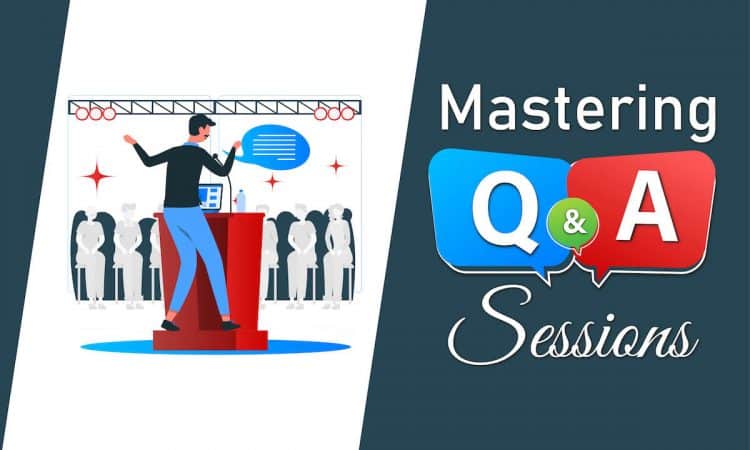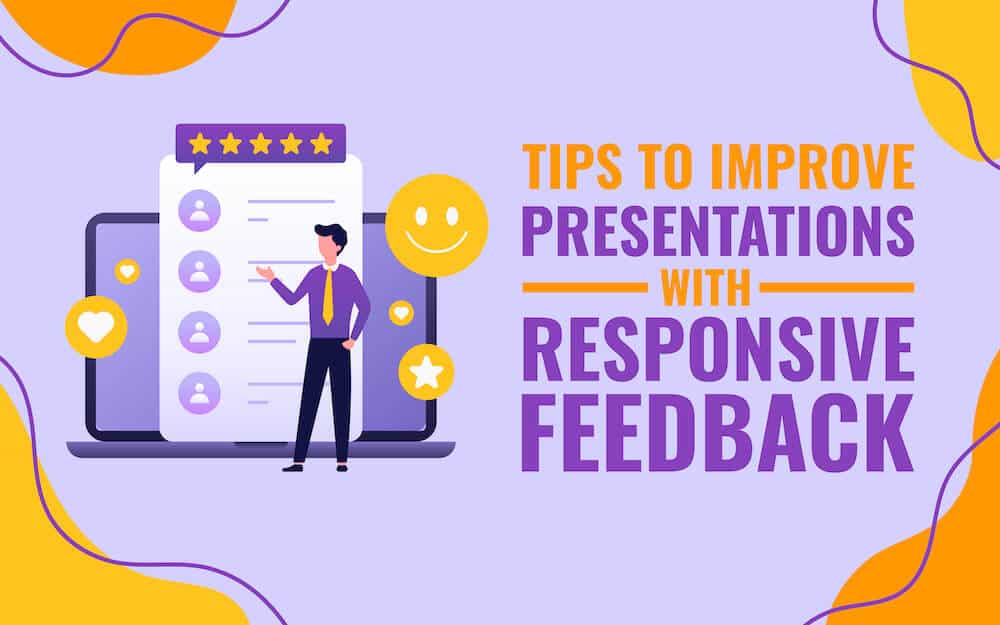
One of the most tormenting moments as a speaker or presenter is when you open the floor to questions. Audience questions can range from naive, simple, and straightforward to challenging and difficult ones, and how you respond can make or break your presentation.
However, with the right mindset and good preparation, you can turn this moment into an opportunity and connect with your audience. The way you answer questions also defines your expertise and experience in the field and builds your credibility accordingly.
In this article, we’ll share some tips for responding to audience questions that will help you deliver confident and satisfactory answers.
1. Prepare for Potential Questions Beforehand
Before your big day, take some time and think about all possible questions that your audience may ask. It will help you anticipate potential conversations and prepare thoughtful responses.
You can answer the following to narrow down potential questions-
- What is the purpose of your presentation, and what is the key message that you wish to deliver?
- Who is your audience, and what are their backgrounds? Are they beginners or experts? (If they are freshers, you can expect simpler questions, whereas if they come from a more experienced background, you should be prepared with technical questions as well.)
- What are some controversial issues related to your topic? Are there any present issues related to it?
By identifying questions ahead of time, you can collect extra information and resources that may come in handy during the Q&A session.
2. Listen Actively and Understand the Question
When a member from the audience asks a question, remember to listen actively and completely understand their point. You can paraphrase the same question to ensure that you and your audience are walking down the same road.
If there are any ambiguities, consider asking them to rephrase their question and ask again. By clarifying the question, you can provide a much better answer to your audience.
3. Keep a Check on Your Nerves
Even though it is absolutely natural to get cold feet when you are presented with an unexpected question, it is also crucial to consciously keep your calm. You must stay composed, both in your tone as well as in your body language.
Try to answer the question to the best of your ability, and if you are unable to gather information about it at that moment, you can respond by saying that you would get back to them with more information on the matter.
If the question seems conflicting or hostile, avoid giving defensive or controversial responses and try to maintain an open-minded and respectful attitude.
4. Be Short and Concise with Your Answers
When answering your audience’s questions, it is important to be concise and clear in your responses. Avoid talking about one topic for too long or going off on tangents. Similarly, avoid using jargon or complex terms as they may confuse or alienate the audience. Instead, use plain and easy-to-understand language and simple explanations that everyone can understand.
Focus on providing a direct and informative answer. To support your explanations, use concrete examples, statistics, or anecdotes and put emphasis on your points.
If the question requires a more nuanced response, consider offering to follow up with the audience member after the presentation.
If there are many similar questions on the same topic, you can group them together and address them in the form of one answer. It can streamline the Q&A session and ensure that everyone’s questions are addressed in a timely and efficient manner.
5. Make Sure to Involve Your Audience
The Q&A session is not only an opportunity for the audience to ask questions but also for you to engage with them and build rapport. You must take some time to acknowledge and express gratitude to each audience member for their questions, and try to address their concerns in a thoughtful and professional manner.
You can also encourage audience participation by conducting a round of follow-up questions, seeking feedback, asking for opinions, or inviting them on the stage to share their experiences and perspectives related to the topic. It can help foster a sense of community and collaboration and make the presentation more interactive for everyone.
6. Don’t Swift Away from the Topic
While it’s important to be open and responsive to audience questions, it’s also important to stay on topic and avoid getting sidetracked.
If an audience member asks a question that is not directly related to the presentation or the topic at hand, politely redirect the conversation back to the main focus. For example, you might say, “That’s an interesting question, but let us first focus on the topic that we are discussing today.”
It will save much of your time and help you and other audience members stay focused on the theme of your presentation.
7. End on a Positive Note
As the Q&A session comes to a close, it is extremely important to end it on a positive note. You can conclude by quickly recapping the key points of the presentation and the questions that were asked and offering any final thoughts or recommendations.
You must also conclude with a call to action and invite the audience to connect with you after the presentation.
8. Use Templates to Commence the Q&A Session
An effective way to open the room for questions is by using pre-designed Question Templates. It will inform your audience that it is time for the Q&A session, and they can prepare and present any questions that they have.
You can also use Frequently Asked Questions (FAQs) templates to answer common doubts without wasting your time. You can use expert-designed templates that can be completely customized and easily added to your slides.
Conclusion
Even though answering questions can seem like a huge burden, you can ease the task by practicing beforehand and rehearsing in front of your friends and family. You can even jot down extra information, facts, statistics, and numbers on placards and carry them along during your presentation. These tips will assist you in answering questions flawlessly and tackling them like a pro!
We hope this article helps you ace your Q&A session in the next presentation!



